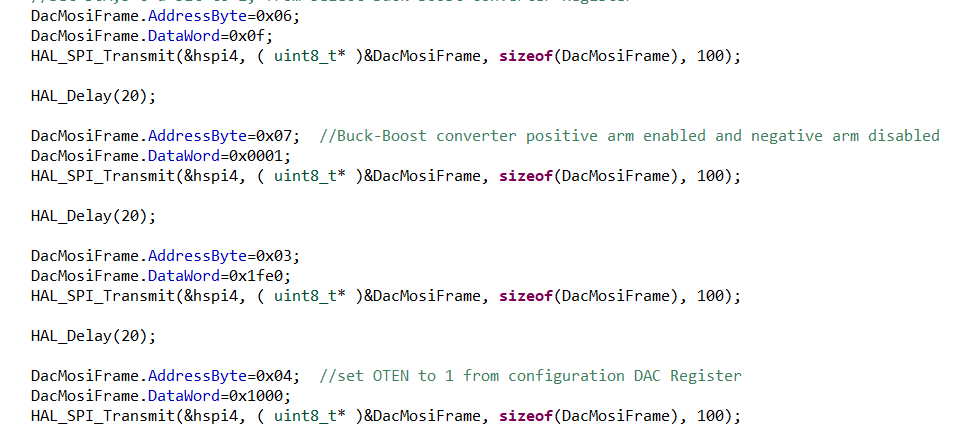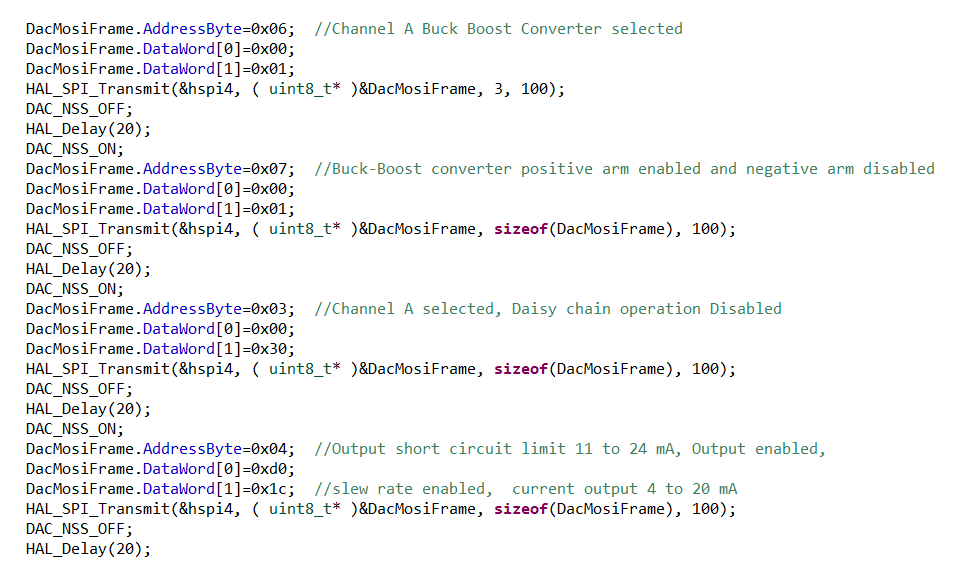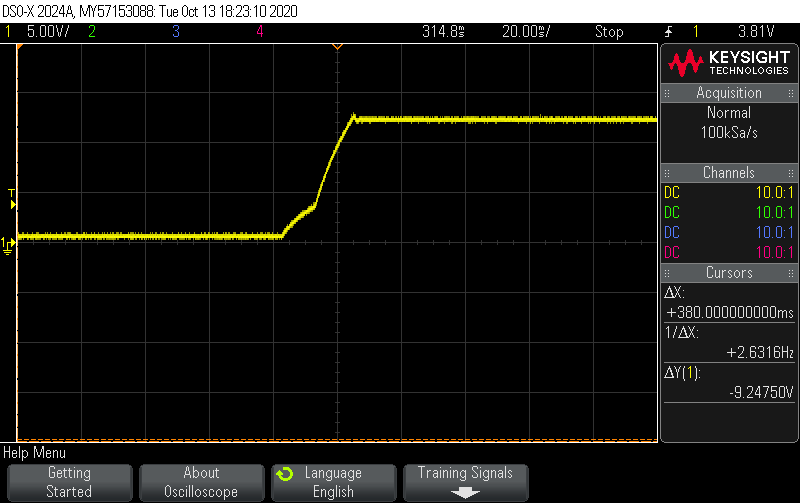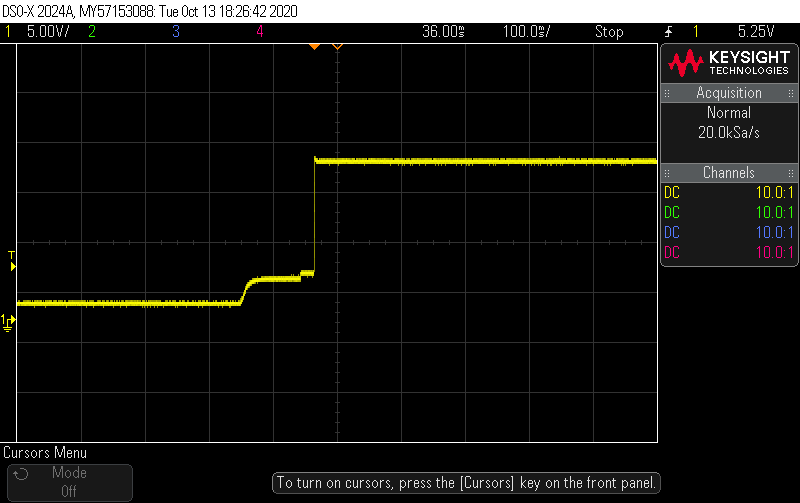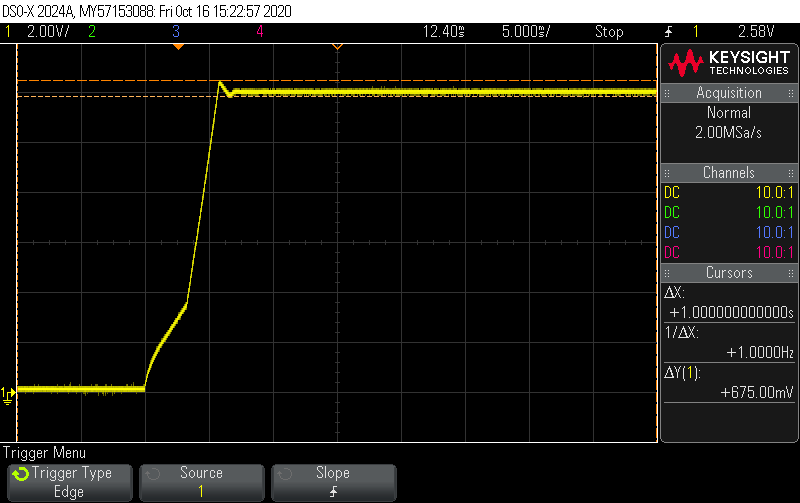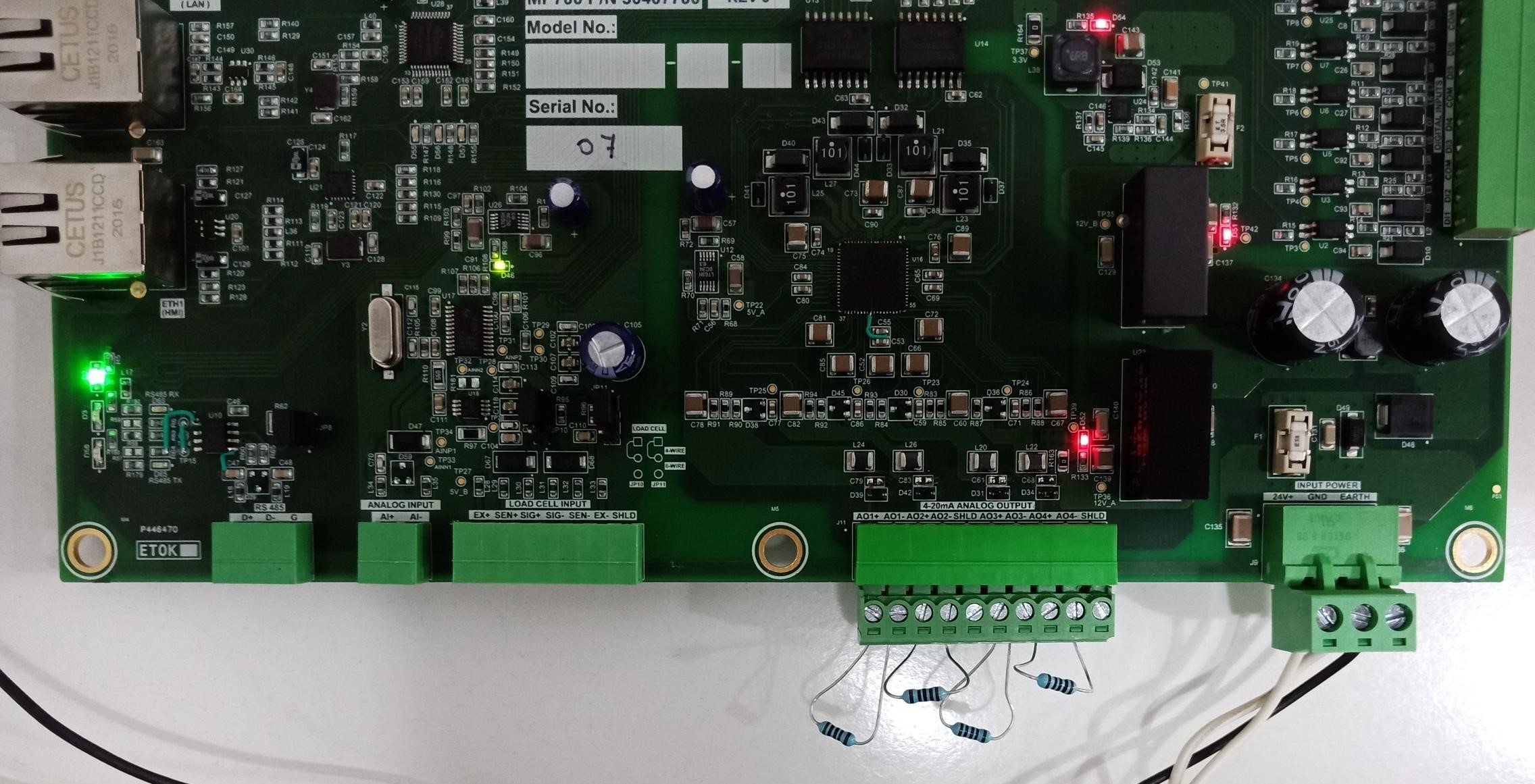Other Parts Discussed in Thread: DAC8771EVM,
Hi Team,
I have designed my own application board using DAC8775. Configuration and voltage levels look ok, but I am not able to read status register and see outputs on the terminals.
I am using STM32 microcontroller to communicate with DAC8775.
Below is the configuration have done in STM32 for SPI:
1. Frame format: Motorola 2. Data size: 8 bits 3. First bit: MSB first 4. Prescaler: 32
5. Clock polarity: High 6. Clock phase: 1 edge 7. CRC calculation: Disabled 8. NSS signal type: Software
Voltages: DVDD = 5V, REFIN = 5V, VPOS_IN_A and VPOS_IN_B = 3.4V, AVDD = 12V
Please find below schematic.
Also, please find below snapshot of configuration and waveforms:
Kindly guide me on this regard.
Than you.
Kiran


